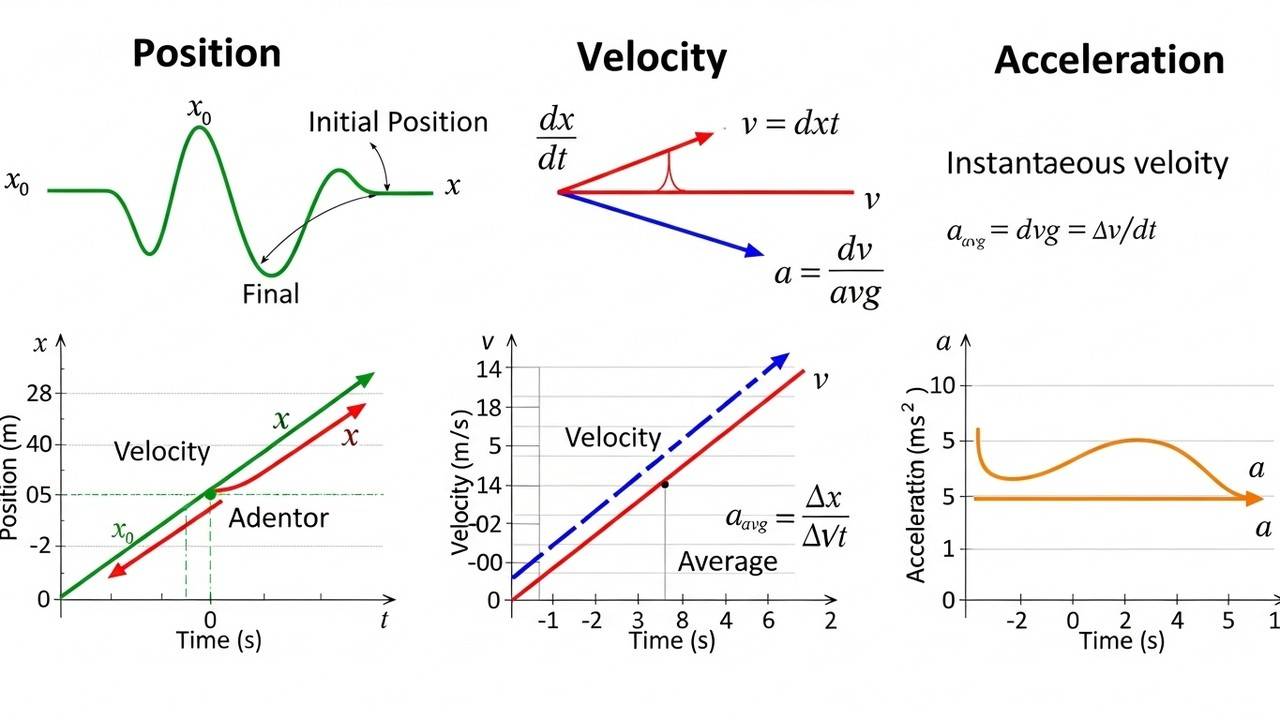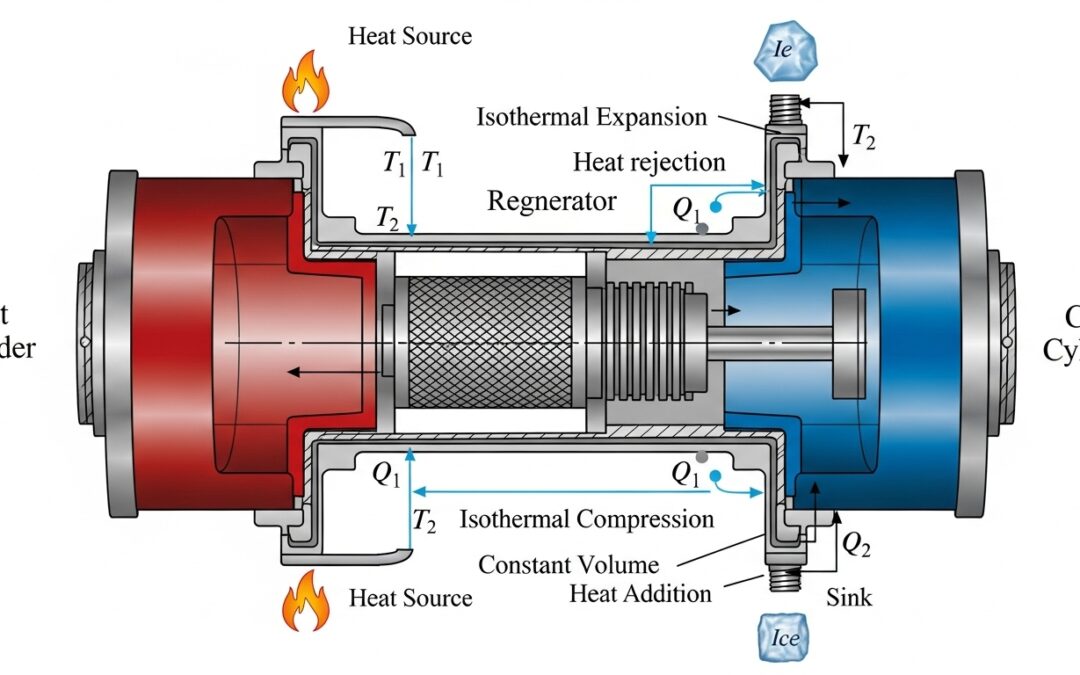The ability to integrate position dependent velocity is crucial for accurately describing motion in physics. Understanding how to compute time and acceleration when velocity varies with position is key to solving many real-world problems. This post will guide you through the steps to solve such problems, providing clear explanations and examples.
Table of Contents
- Delving into Position-Dependent Velocity
- Calculating Acceleration with Position-Dependent Velocity
- Key Takeaways
- Similar Problems — Fully Worked Solutions
- Key Formulas at a Glance
- Problem 1 — Time with ##v(x)=2x## from ##x=0## to ##x=2##
- Problem 2 — Acceleration for ##v(x)=x^2+1## at ##x=1##
- Problem 3 — Time with ##v(x)=\sqrt{x}## from ##x=1## to ##x=4##
- Problem 4 — Acceleration for ##v(x)=3x+2## at ##x=0##
- Problem 5 — Time with ##v(x)=\dfrac{1}{x}## from ##x=1## to ##x=2##
- Summary of Correct Answers and Notes
- Extra Practice (with Solutions)
Read More
Understanding motion is fundamental to physics, and when velocity depends on position, the analysis becomes particularly interesting. In this exploration, we will delve into how to compute time and acceleration when the velocity of an object varies with its position. This process involves integrating and applying calculus principles. Let’s begin by examining the core concepts and methods.
Delving into Position-Dependent Velocity
The scenario we’re addressing involves a particle whose velocity changes as it moves along a path. This is a classic problem in kinematics, where the relationship between position, velocity, and acceleration is key. Rather than constant acceleration, we have a velocity that varies with position, adding a layer of complexity. The challenge lies in finding the time it takes to reach a specific point and calculating the acceleration at a given position.
Understanding the Problem: Velocity as a Function of Position
When velocity, ##v(x)##, is given as a function of position, the standard kinematic equations do not directly apply. Instead, we must use calculus. The core idea is to recognize that velocity, ##v(x) = \frac{dx}{dt}##, represents the rate of change of position with respect to time. To find the time, we must integrate this relationship. Similarly, to find acceleration, we utilize the chain rule to relate the change in velocity to the change in position.
To get started, we have the velocity equation ##v(x) = 4\sqrt{x+1}##, and we know the initial position, ##x(0) = 0##, at time ##t=0##. Our goal is to find the travel time to ##x = 50 m## and the acceleration at ##x = 24 m##. We will use integration to find the time and differentiation to find the acceleration. These steps are essential for understanding how motion unfolds when velocity is position-dependent.
Step-by-Step: Finding the Travel Time
To find the travel time, we start with ##v(x) = \dfrac{dx}{dt}##, which can be rearranged to ##dt = \frac{dx}{v(x)}##. Since ##v(x) = 4\sqrt{x+1}##, we have ##dt = \frac{dx}{4\sqrt{x+1}}##.
Integrating both sides, we get:
The left side is simply ##t##. The right side integral requires a substitution or direct integration, yielding ##\frac{1}{4} \cdot 2\sqrt{x+1} = \frac{1}{2}\sqrt{x+1}##.
The limits of integration are from 0 to 50 m for position. This results in ##t = \frac{1}{2}(\sqrt{50+1} – \sqrt{0+1}) = \frac{1}{2}(\sqrt{51} – 1)##.
Calculating Acceleration with Position-Dependent Velocity
Calculating acceleration when velocity depends on position requires a different approach. The standard acceleration formula, ##a = \frac{dv}{dt}##, is less helpful here. Instead, we use the chain rule to relate the change in velocity to the change in position. This allows us to calculate acceleration directly from the velocity function.
Understanding Acceleration in Position-Dependent Motion
The chain rule gives us ##a = \frac{dv}{dt} = \frac{dv}{dx} \cdot \frac{dx}{dt}##. Since ##\frac{dx}{dt} = v(x)##, we can rewrite the acceleration as ##a = v(x) \cdot \frac{dv}{dx}##. This form is particularly useful when the velocity is a function of position. It directly relates acceleration to the velocity and its derivative with respect to position. By using this formula, we can find the acceleration at any given position.
To find the acceleration at ##x = 24 m##, we first need to find ##\frac{dv}{dx}##. Given ##v(x) = 4\sqrt{x+1}##, we differentiate with respect to ##x## to get ##\frac{dv}{dx} = \frac{4}{2\sqrt{x+1}} = \frac{2}{\sqrt{x+1}}##. Now, we can calculate the acceleration using ##a = v(x) \cdot \frac{dv}{dx}##. At ##x = 24 m##, ##v(24) = 4\sqrt{24+1} = 20 m/s## and ##\frac{dv}{dx} = \frac{2}{\sqrt{24+1}} = \frac{2}{5}##. Therefore, ##a = 20 \cdot \frac{2}{5} = 8 m/s^2##.
Dimensional Consistency and Final Results
It’s crucial to verify that each step maintains dimensional consistency. For time, the integral of ##\frac{dx}{v}## should yield units of seconds (s), which is correct. For acceleration, ##a = v \cdot \frac{dv}{dx}##, which gives units of ##(m/s) \cdot (m/s)^{-1} = m/s^2##, as expected. This confirms that our calculations are dimensionally correct. The travel time to ##x = 50 m## is ##t = \frac{1}{2}(\sqrt{51} – 1) \approx 3.07 s##, and the acceleration at ##x = 24 m## is ##8.00 m/s^2##.
Key Takeaways
In conclusion, solving problems involving position-dependent velocity requires a careful application of calculus. We have successfully computed the travel time and acceleration using integration and differentiation, respectively. Always pay attention to units and dimensional consistency to ensure the accuracy of your calculations. These techniques are essential for understanding and predicting motion in various physical scenarios, from simple mechanics to more complex systems.
| Parameter | Value | Units |
|---|---|---|
| Travel Time (t) to x = 50 m | 3.07 | s |
| Acceleration (a) at x = 24 m | 8.00 | m/s² |
Similar Problems — Fully Worked Solutions
When velocity is given as a function of position, ##v(x)##, two indispensable relations are:
- Travel time from ##x=a## to ##x=b##: ### t \;=\; \int_{a}^{b}\frac{dx}{v(x)}. ###
- Acceleration as a function of position: since ##a=\dfrac{dv}{dt}=\dfrac{dv}{dx}\dfrac{dx}{dt}##, we have ### a(x) \;=\; v(x)\,\dfrac{dv}{dx}. ###
Key Formulas at a Glance
| Quantity | Formula | Typical Use |
|---|---|---|
| Time over ##x\in[a,b]## | ### t = \int_{a}^{b}\dfrac{dx}{v(x)} ### | Compute travel time when ##v## depends on ##x## |
| Acceleration at position ##x## | ### a(x) = v(x)\,\dfrac{dv}{dx} ### | Instantaneous acceleration from ##v(x)## |
Problem 1 — Time with ##v(x)=2x## from ##x=0## to ##x=2##
Given: ##v(x)=2x##. Find: ### t=\int_{0}^{2}\dfrac{dx}{2x}. ###
The integrand behaves like ##1/x## near ##x=0##, so the integral is improper:
### t \;=\; \frac{1}{2}\int_{0}^{2}\frac{dx}{x} \;=\; \frac{1}{2}\,\big[\ln x\big]_{0}^{2} \;=\; \infty. ###
Conclusion: The time diverges; starting exactly at ##x=0## (where ##v=0##) and moving away under the law ##v=2x## would take infinite time. If one starts a small distance ##\varepsilon>0## away, then ### t=\tfrac{1}{2}\ln\!\big(\tfrac{2}{\varepsilon}\big) ###, which grows without bound as ##\varepsilon\to 0^+##.
Corrected solution: ##t=\infty## (not ##1~\text{s}##).
Problem 2 — Acceleration for ##v(x)=x^2+1## at ##x=1##
Given: ##v(x)=x^2+1##. Then ### \dfrac{dv}{dx}=2x. ### Hence
### a(x) \;=\; v\dfrac{dv}{dx} \;=\; (x^2+1)(2x) \;=\; 2x(x^2+1). ###
At ##x=1##, ### a(1)=2\cdot 1\cdot (1+1)=4~\text{m/s}^2. ###
Result: ##a=4~\text{m/s}^2##.
Problem 3 — Time with ##v(x)=\sqrt{x}## from ##x=1## to ##x=4##
Given: ##v(x)=\sqrt{x}##. Compute
### t \;=\; \int_{1}^{4}\frac{dx}{\sqrt{x}} \;=\; \big[\,2\sqrt{x}\,\big]_{1}^{4} \;=\; 2(2-1) \;=\; 2~\text{s}. ###
Result: ##t=2~\text{s}##.
Problem 4 — Acceleration for ##v(x)=3x+2## at ##x=0##
Given: ##v(x)=3x+2##, so ### \dfrac{dv}{dx}=3. ### Then
### a(x) \;=\; v\dfrac{dv}{dx} \;=\; (3x+2)\cdot 3 \;=\; 9x+6. ###
At ##x=0##, ### a(0)=6~\text{m/s}^2. ###
Result: ##a=6~\text{m/s}^2##.
Problem 5 — Time with ##v(x)=\dfrac{1}{x}## from ##x=1## to ##x=2##
Given: ##v(x)=1/x##. Then
### t \;=\; \int_{1}^{2}\frac{dx}{1/x} \;=\; \int_{1}^{2} x\,dx \;=\; \left[\tfrac{1}{2}x^2\right]_{1}^{2} \;=\; \tfrac{1}{2}(4-1) \;=\; \tfrac{3}{2}~\text{s}. ###
Corrected solution: ##t=\tfrac{3}{2}~\text{s}## (not ##\ln 2##).
Summary of Correct Answers and Notes
| Problem | Given ##v(x)## | Quantity | Correct Result | Note |
|---|---|---|---|---|
| 1 | ##2x## | ##t: 0 \to 2## | ##t=\infty## | Improper integral diverges at ##x=0## |
| 2 | ##x^2+1## | ##a## at ##x=1## | ##4~\text{m/s}^2## | Uses ##a=v\,dv/dx## |
| 3 | ##\sqrt{x}## | ##t: 1 \to 4## | ##2~\text{s}## | Integrate ##x^{-1/2}## |
| 4 | ##3x+2## | ##a## at ##x=0## | ##6~\text{m/s}^2## | Constant ##dv/dx=3## |
| 5 | ##1/x## | ##t: 1 \to 2## | ##\tfrac{3}{2}~\text{s}## | Integrate ##x##, not ##1/x## |
Extra Practice (with Solutions)
Problem A. For ##v(x)=x+2##, find the time from ##x=0## to ##x=3##.
Solution. ### t=\int_{0}^{3}\frac{dx}{x+2} = \big[\ln(x+2)\big]_{0}^{3} = \ln\!\left(\frac{5}{2}\right). ###
Problem B. Let ##v(x)=x\,e^{-x}##. Find the acceleration at ##x=1##.
Solution. First ### \dfrac{dv}{dx}= e^{-x} – x e^{-x} = e^{-x}(1-x). ### Thus
### a(x)=v\dfrac{dv}{dx}= \big(x e^{-x}\big)\big(e^{-x}(1-x)\big)= x(1-x)e^{-2x}. ###
At ##x=1##, ### a(1)= 1\cdot(1-1)\cdot e^{-2}=0. ###
We also Published
RESOURCES
- calculus – Am I correct? Distance when velocity depends on position …
- How to find position as a function of time, when I only know velocity …
- Time dependence of velocity from position dependece of velocity …
- How to Find the Position Function of an Object Given its Velocity …
- [Physics I] Velocity dependent acceleration challenge? : r …
- An integrator circuit in cerebellar cortex
- Integrate acceleration to velocity and displacement – MATLAB Answers
- homework and exercises – How do I get the position at time $t$, if …
- On the calculation of velocity-dependent properties in molecular …
- Special stability advantages of position-Verlet over velocity-Verlet in …





0 Comments